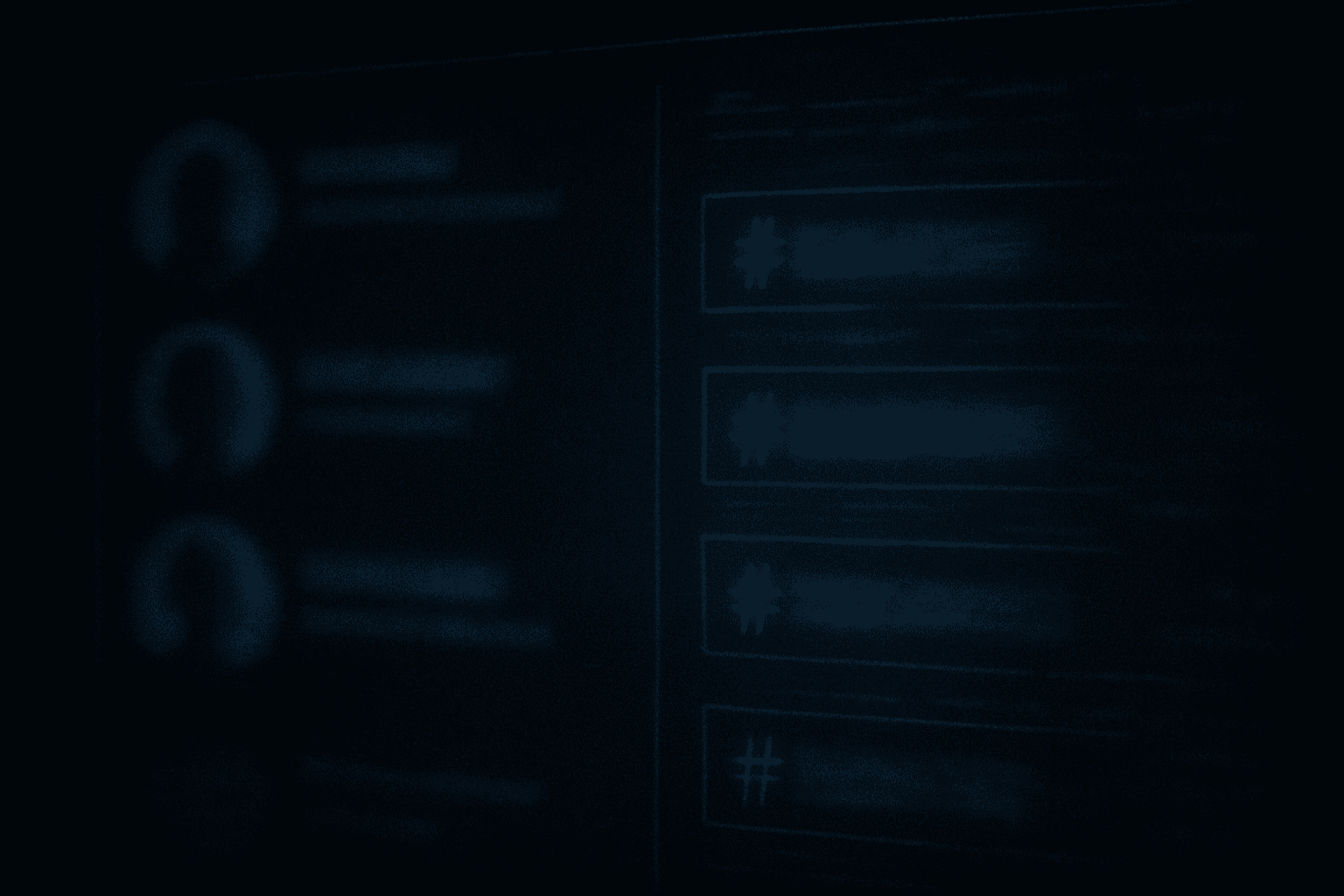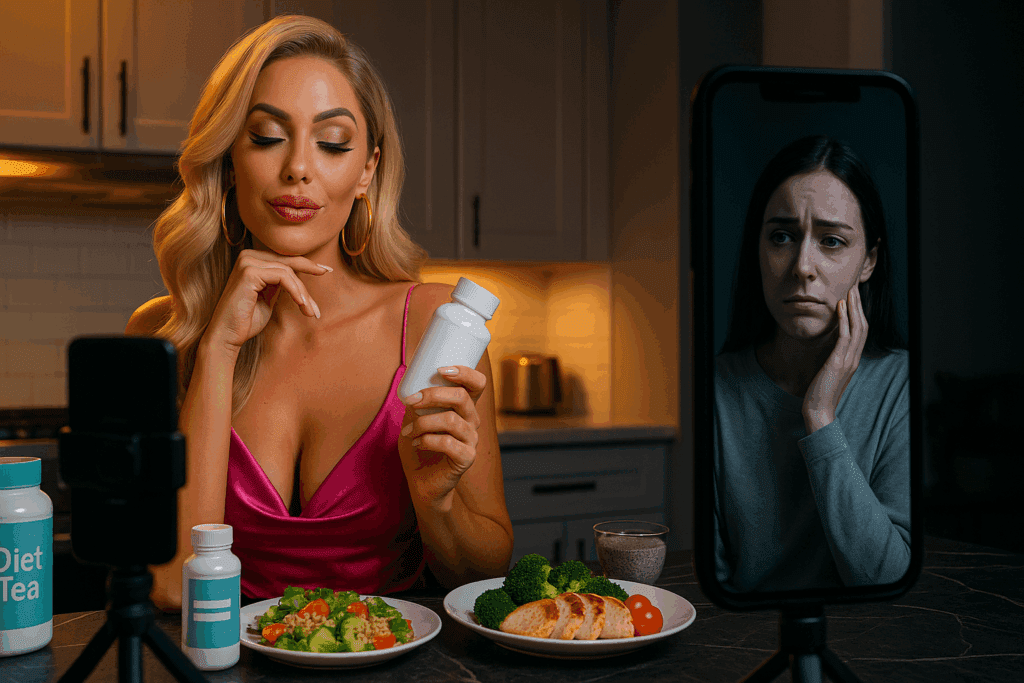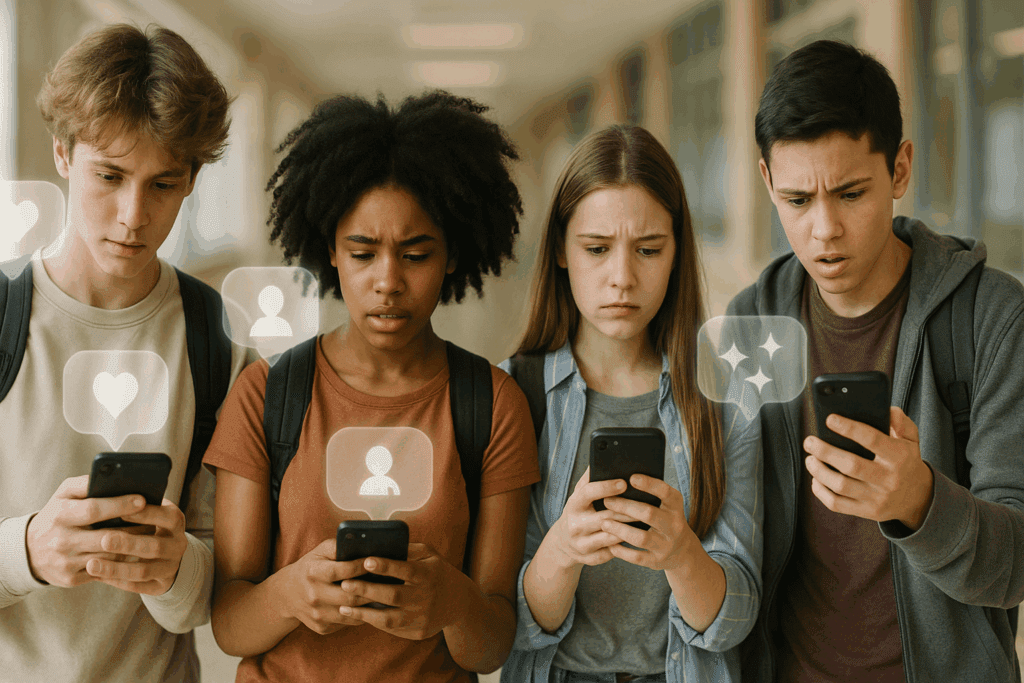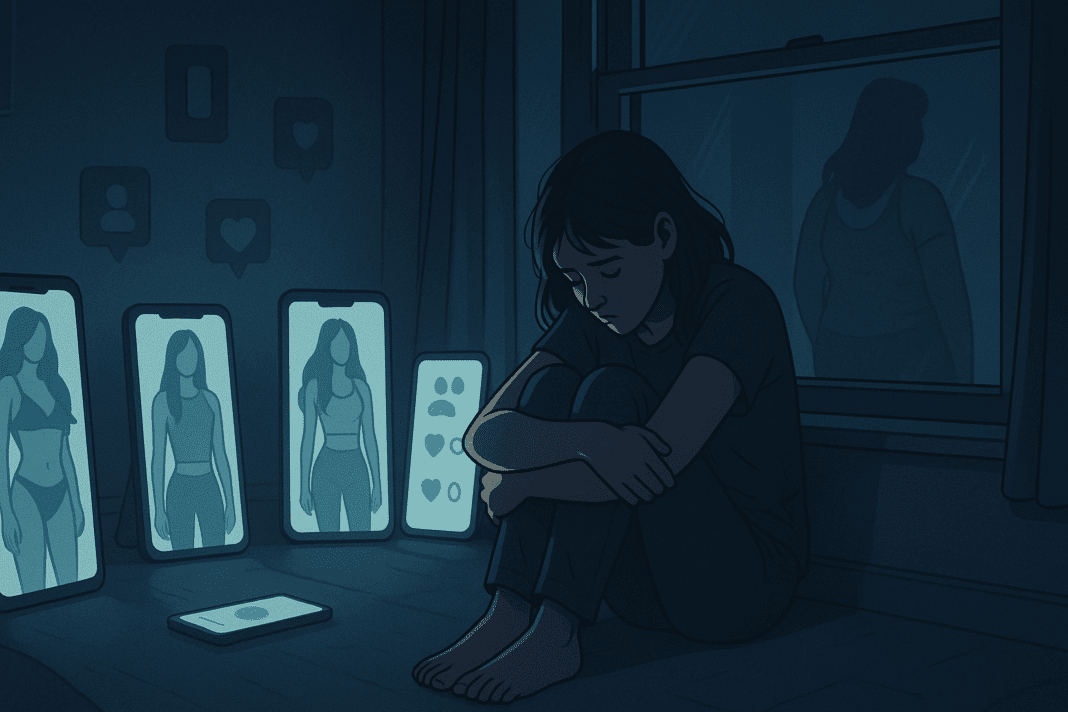In today’s digital world, where likes, shares, and comments carry social currency, the intersection of social media and mental health has become a subject of increasing scrutiny. For adolescents and young adults in particular, social media platforms such as Instagram, TikTok, and YouTube shape not only trends and self-expression but also body image, food behaviors, and self-worth. Among the many mental health concerns amplified in this environment, eating disorders such as anorexia nervosa are alarmingly prevalent. Understanding the relationship between social media and eating disorders is crucial for both prevention and recovery, especially as digital spaces continue to influence perceptions of beauty and control. The link between anorexia and social media is not merely anecdotal—it is supported by a growing body of psychological, sociological, and clinical research.
You may also like: How to Stop Emotional Eating and Regain Control: Mindful Nutrition Strategies That Support a Healthier Lifestyle

The Evolution of Social Media and Body Image Ideals
The rise of image-centric platforms has redefined how individuals interact with cultural ideals of beauty. Before social media, traditional media outlets like magazines and television already propagated narrow beauty standards. However, social media has democratized content creation, allowing anyone to share and promote images. While this development has enabled body positivity movements, it has also intensified appearance-based comparisons. The constant exposure to curated, filtered, and often digitally altered images can erode self-esteem and fuel dissatisfaction with one’s body.
For individuals susceptible to perfectionistic tendencies or low self-worth—both of which are common risk factors for anorexia—these comparisons can become internalized. The link between anorexia and social media becomes particularly pronounced when users consume content promoting extreme thinness or “thinspiration,” a term describing posts that glorify being underweight. In such digital environments, users may begin to equate thinness with value, discipline, and social acceptance, reinforcing unhealthy eating patterns and rigid behaviors.

Understanding Anorexia Nervosa in the Digital Age
Anorexia nervosa is a complex and multifaceted eating disorder characterized by an intense fear of gaining weight, a distorted body image, and restrictive food intake that leads to significant weight loss. While it can stem from a combination of genetic, psychological, and environmental factors, cultural and social influences play a pivotal role in its development. The online world amplifies these influences in unique ways.
Social media can serve as a constant feedback loop for those with anorexic tendencies. The immediate validation offered by likes and compliments on weight loss or body shape can encourage increasingly restrictive behaviors. Additionally, the anonymity and reach of online platforms allow pro-anorexia communities to form, where users may share dangerous dieting tips, fasting schedules, or motivational content designed to support disordered behaviors. Although many platforms have made efforts to ban or flag such content, the persistence of coded language and euphemisms makes it difficult to control. As a result, the correlation between social media and eating disorders continues to concern public health professionals, educators, and caregivers.

Algorithms, Echo Chambers, and Content Personalization
One of the lesser-discussed but highly influential aspects of the social media experience is algorithmic content delivery. Platforms are designed to keep users engaged by feeding them content similar to what they have previously liked, watched, or interacted with. This means that someone who engages with fitness videos, dieting tips, or thinness-promoting posts is likely to be shown more of the same. Over time, this curated feed can create an echo chamber, reinforcing narrow ideals and disordered thinking.
In cases related to anorexia and social media, this echo chamber effect can be especially harmful. A user exploring health or wellness content with innocent intent may find themselves gradually exposed to more extreme narratives that promote food restriction or glamorize emaciation. Because these posts often present themselves under the guise of self-improvement or fitness, it can be difficult to distinguish helpful advice from harmful influence. As exposure increases, so too can internalized pressure, contributing to the development or exacerbation of an eating disorder.
Influencer Culture and the Pressure to Conform
Influencer culture plays a significant role in shaping norms around body image, diet, and lifestyle. Many influencers present themselves as authorities on wellness, despite lacking medical or psychological credentials. They often showcase highly edited versions of their lives, including what they eat, how they work out, and how they maintain a certain physique. While this content may be inspirational for some, it can also be deeply damaging for others, especially when it promotes unrealistic standards or unsustainable habits.
The relationship between social media and eating disorders becomes more evident in the context of influencer marketing. Influencers may promote diet teas, weight loss supplements, or extreme workout plans that are not evidence-based and can have harmful side effects. For someone vulnerable to anorexia, these promotions can validate and normalize dangerous behaviors. Additionally, constant exposure to these idealized lifestyles can create a sense of inadequacy and failure, reinforcing the cycle of disordered eating. The visual nature of platforms like Instagram and TikTok only exacerbates this dynamic, where appearance often outweighs substance in measuring worth and success.

Adolescents and the Fragility of Developing Identities
Adolescence is a critical period for identity formation, self-esteem, and body image. During this stage, individuals are particularly susceptible to peer influence and external validation. Social media platforms, which often serve as a primary source of social interaction for teens, can deeply shape their understanding of self. The desire to be accepted, admired, or validated by peers can lead to the adoption of extreme behaviors to achieve perceived beauty standards.
When considering the connection between anorexia and social media, it’s important to acknowledge the developmental vulnerabilities of young users. Teens may engage in restrictive dieting, excessive exercise, or other harmful behaviors not because of clinical intent, but because these actions are modeled, celebrated, and rewarded in their online environments. Without adequate guidance, they may internalize disordered behaviors as normal or even aspirational. Parents, educators, and health professionals must be aware of these dynamics to foster early intervention and promote healthy digital engagement.
The Role of Mental Health in Digital Vulnerability
Mental health conditions such as anxiety, depression, and obsessive-compulsive tendencies are often comorbid with eating disorders, including anorexia. Social media can exacerbate these underlying issues by creating environments of constant comparison, unrealistic expectations, and emotional reactivity. Individuals struggling with perfectionism or low self-worth may be more likely to seek validation online, making them more vulnerable to content that reinforces disordered behaviors.
The connection between social media and eating disorders is not merely about exposure to harmful content—it is about how that content interacts with preexisting psychological vulnerabilities. A teen with high anxiety may feel compelled to control their body as a way to manage their internal distress, and social media may provide a blueprint for how to do so through restriction and discipline. Likewise, someone experiencing depression may turn to social media for escape, only to find themselves spiraling deeper into disordered thinking when faced with constant images of unattainable perfection. Recognizing this interaction between mental health and digital exposure is essential for both prevention and treatment.

Pro-Anorexia Communities and Harmful Online Spaces
Despite efforts to regulate harmful content, pro-anorexia (or “pro-ana”) communities continue to thrive in the shadows of social media platforms. These communities often use coded language, symbols, and hashtags to evade content moderation, allowing them to remain accessible to those seeking them out. While some users may initially stumble upon these spaces out of curiosity, others actively search for them, especially when feeling isolated or misunderstood.
Pro-ana spaces typically reinforce the belief that anorexia is not a disorder but a lifestyle choice. They may offer tips on suppressing hunger, hiding weight loss from loved ones, or achieving certain weight goals. For individuals already struggling with disordered eating, participation in these communities can intensify symptoms and prolong recovery. The dangerous normalization of anorexia within these digital enclaves highlights the urgent need for more effective regulation, digital literacy education, and support systems that provide constructive alternatives.
The Double-Edged Sword of Recovery Content
While much of the focus has been on the dangers of social media and eating disorders, it is important to note that online platforms can also offer support and healing. Recovery influencers, therapists, and peer support accounts often use social media to spread awareness, share personal stories, and promote body acceptance. For individuals in recovery, these spaces can provide validation, community, and hope. However, even recovery content must be approached critically.
Not all recovery advice shared online is grounded in evidence-based practices. Some accounts may inadvertently trigger viewers by sharing graphic details of disordered behaviors or before-and-after images. Others may glamorize recovery in ways that feel unattainable, creating another set of ideals to live up to. Therefore, while social media can be a valuable tool in the recovery journey, it must be navigated thoughtfully. Users should be encouraged to seek professional guidance and use social media as a supplement, not a substitute, for real-world treatment.
Strategies for Building a Healthier Digital Relationship
Given the inextricable link between anorexia and social media, developing healthier digital habits is essential. One of the first steps is cultivating media literacy—understanding that not everything online is real, healthy, or helpful. Learning to recognize filters, paid promotions, and editing techniques can reduce the power of comparison and help users develop more realistic standards.
Curating one’s feed is another effective strategy. This involves unfollowing accounts that promote harmful ideals and instead following content that encourages self-acceptance, diverse body types, and balanced lifestyles. Time limits, screen-free routines, and mindful scrolling can also help reduce the emotional toll of constant exposure. In some cases, digital detoxes or breaks from triggering platforms may be necessary for mental health recovery. Importantly, these strategies should be accompanied by supportive conversations with mental health professionals, peers, or trusted adults who can help reinforce positive change.

The Importance of Education, Advocacy, and Policy Change
To address the complex relationship between social media and eating disorders, systemic change is needed alongside individual efforts. Schools, healthcare providers, and parents must be equipped with resources to educate young people about body image, media influence, and emotional regulation. Incorporating discussions about digital well-being into school curricula can foster early awareness and resilience.
On a broader level, social media platforms must take greater responsibility for the content they promote. While algorithmic recommendations are designed to boost engagement, they must also be regulated to prevent the amplification of harmful content. Transparent policies, improved moderation, and collaboration with mental health experts can help create safer online environments. Policymakers can also play a role by mandating clearer labeling of digitally altered images or implementing regulations on diet product advertising targeted at youth. Ultimately, reducing the impact of anorexia and social media on public health requires a collaborative effort across sectors.
Frequently Asked Questions: Social Media, Anorexia, and Mental Health
What role does anonymity play in the relationship between social media and eating disorders?
Anonymity can significantly influence how social media and eating disorders intersect. Online anonymity allows users to engage in communities or consume content without revealing their identity, which can lower the threshold for participation in harmful behaviors. Individuals struggling with anorexia may feel safer sharing restrictive habits or seeking validation in anonymous forums, where there is less fear of real-world judgment. This can make recovery more challenging because it encourages secrecy and reduces accountability. At the same time, anonymity can also be harnessed in positive ways when used to seek out support groups, professional resources, or recovery communities without stigma.
How do cultural differences affect the connection between anorexia and social media?
Cultural values play a nuanced role in shaping how anorexia and social media interact across different regions. In Western cultures, where thinness is often equated with beauty and success, social media may intensify pressure to conform to those ideals. In contrast, in some Eastern or African cultures, body ideals may differ, potentially buffering or altering the manifestation of disordered eating. However, as global media converges, even traditionally body-positive societies are seeing a rise in eating disorders, often paralleling increased access to platforms that idealize thinness. Understanding cultural context is crucial in developing interventions that are both sensitive and effective.
Can artificial intelligence be used to monitor or reduce the impact of harmful content related to social media and eating disorders?
Yes, artificial intelligence (AI) holds promising potential in identifying and mitigating the dangers posed by the link between social media and eating disorders. AI algorithms can be trained to detect harmful hashtags, language patterns, or imagery associated with anorexia and social media content that glamorizes disordered behaviors. Some platforms already employ AI to flag content, but the technology is still developing and often struggles with context. Ethical AI use must balance content moderation with free expression, particularly in mental health spaces. With further refinement, AI could play a key role in early detection, referral to help resources, and real-time content filtering to protect vulnerable users.
How do social media trends like ‘What I Eat in a Day’ videos contribute to disordered eating?
Trends such as “What I Eat in a Day” videos can be particularly problematic when exploring the relationship between social media and eating disorders. These videos often showcase highly restrictive or meticulously curated meals that may not reflect the nutritional needs of most viewers. When consumed frequently, they can create unrealistic expectations and promote food comparison, especially for individuals vulnerable to anorexia. While some content creators aim to share balanced meals, many perpetuate the idea that minimal eating equates to health or discipline. These trends can subtly reinforce the disordered belief that food should be tightly controlled or minimalized to achieve social approval.
Are there long-term psychological effects from prolonged exposure to disordered content on social media?
The psychological effects of long-term exposure to content related to anorexia and social media can be both deep and enduring. Repeated viewing of thin-ideal imagery and restrictive eating tips can alter cognitive schemas, leading individuals to associate self-worth with body size or control over food. Over time, this exposure can result in chronic low self-esteem, social withdrawal, or even co-occurring disorders like anxiety or depression. In adolescents, whose identities are still forming, these effects may persist into adulthood, shaping lifelong attitudes toward health, appearance, and self-worth. Preventive education and early intervention are essential to interrupt this cycle.
How can parents navigate conversations about social media and eating disorders without shaming or pushing their children away?
Navigating conversations about social media and eating disorders requires empathy, patience, and informed dialogue. Rather than focusing on body weight or eating behaviors directly, parents can start discussions around digital literacy—teaching their children how to critically evaluate online content. Creating a safe, non-judgmental space where teens feel heard is crucial to encouraging openness. It also helps to model balanced digital use and self-compassion so that children see healthy behaviors in action. Importantly, involving a licensed therapist when concerns arise can provide professional guidance without placing undue pressure on the parent-child relationship.
What are the emerging alternatives to mainstream platforms that offer safer spaces for body image and mental wellness?
In response to growing concerns about social media and eating disorders, several emerging platforms are being developed to offer safer digital spaces. Apps like “Body Positive Me” or moderated forums through mental health nonprofits provide curated content that prioritizes self-acceptance and medically informed guidance. Some platforms even integrate built-in check-ins or AI-assisted mental health prompts to encourage reflection and discourage harmful behaviors. These alternatives aim to combine the community aspects of traditional social media with safer boundaries and professional oversight. While they may not yet rival the reach of major platforms, their rise signals a shift toward digital responsibility in the wellness space.
How do algorithmic design and monetization models contribute to the spread of harmful content?
The very structure of many social media platforms contributes to the problem. Algorithms prioritize engagement, and content that triggers strong emotional reactions—whether admiration, envy, or aspiration—tends to perform better. Posts that idealize extreme thinness or showcase dramatic weight transformations often receive more likes, shares, and comments, inadvertently rewarding disordered content. Additionally, monetization models incentivize influencers to post content that performs well, even at the expense of authenticity or health. This dynamic deepens the complex connection between anorexia and social media, as users are drawn into content cycles that prioritize clicks over well-being.
Can digital detoxes help reduce the impact of social media on body image?
Digital detoxes can offer valuable relief, particularly for those feeling overwhelmed by constant exposure to idealized images. Temporarily stepping away from platforms associated with poor body image allows users to reconnect with offline values and rediscover their internal sense of worth. While a detox alone cannot resolve eating disorders, it can serve as a reset button—interrupting harmful content cycles and providing space for reflection. When combined with therapy, mindfulness practices, and community support, detoxing can be a powerful part of recovery. The positive impact is especially notable when users return to social media with clearer boundaries and more intentional usage patterns.
What steps can schools and universities take to reduce the influence of harmful online content on students?
Educational institutions can play a transformative role in reducing the impact of social media and eating disorders on students. Integrating media literacy into health curricula helps students critically assess online content and recognize manipulation tactics like filters, ads, or edited photos. Schools can also offer workshops on self-esteem, emotional regulation, and digital citizenship to strengthen resilience. Peer support groups and on-campus counseling services provide safe spaces for dialogue and early intervention. Universities, in particular, can partner with mental health organizations to offer campaigns that de-stigmatize eating disorders and promote balanced digital habits. By normalizing these conversations in educational settings, institutions empower students to navigate social media with awareness and confidence.
Reflecting on the Impact of Social Media and Eating Disorders
The intersection of social media and eating disorders reveals a pressing need for awareness, compassion, and strategic action. Anorexia is not merely a personal struggle but a reflection of the cultural and digital ecosystems in which we live. As social media continues to influence how individuals see themselves and others, the potential for harm must be taken seriously—but so too must the potential for healing and connection.
By acknowledging the unique vulnerabilities of adolescents, the dangers of algorithmic echo chambers, and the influence of unqualified influencers, we can begin to mitigate some of the damage. At the same time, promoting recovery-centered content, supporting digital literacy, and advocating for policy change can help shift the narrative from one of harm to one of hope. Ultimately, recognizing and addressing the connection between anorexia and social media is not just a task for researchers and clinicians—it is a responsibility we all share in fostering a healthier, more compassionate digital world.
Was this article helpful? Don’t let it stop with you. Share it right now with someone who needs to see it—whether it’s a friend, a colleague, or your whole network. And if staying ahead on this topic matters to you, subscribe to this publication for the most up-to-date information. You’ll get the latest insights delivered straight to you—no searching, no missing out.
Further Reading:
Eating Disorders and Social Media
Social Media Effects Regarding Eating Disorders and Body Image in Young Adolescents
The impact of the media on eating disorders in children and adolescents

